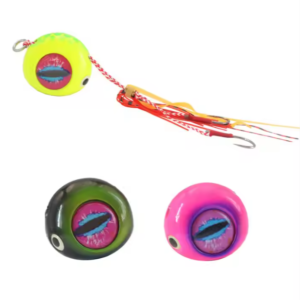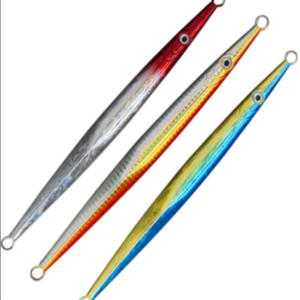wholesale Metal Blade Lures Fishing Lure Hard Bait Material Fishing For Sale
Додаткова інформація
| колір | optional |
|---|---|
| Material | Lead, metal |
| Weight | 7g,10g,15g,20g,25g,30g,40g,60g,80g,100g,120g,150g,200g,250g |
| Model | TX-20 |
| Package | PVC Bag |
| Length | 8/10.6/12cm |
Product Details:
Metal jig fishing has become a cornerstone technique in the world of angling, celebrated for its versatility, ease of use, and broad appeal across different environments and species. Whether you’re heading offshore for big-game pelagic species like tuna or working coastal reefs for snapper, metal jigs provide an accessible way to attract and hook fish. In this guide, we’ll delve into everything you need to know about metal jig fishing, from understanding why they’re so effective to choosing the right jigs, mastering techniques, and optimizing your experience in the best fishing locations.
Why Every Angler Needs Metal Jigs in Their Tackle Box
Metal jigs have a range of qualities that make them indispensable for anglers. Here’s what makes them so essential:
- Rapid Sinking Power: Metal jigs are dense and heavy, allowing them to sink quickly. This makes them highly effective in deep waters or fast-moving currents, where reaching the desired depth swiftly is crucial.
- Lifelike Action: When jigged correctly, metal jigs imitate the erratic, darting motion of a wounded baitfish—a movement that often triggers a predatory response in fish.
- Built for Tough Conditions: Constructed from durable materials, metal jigs withstand the wear and tear of saltwater environments and can endure repeated strikes from aggressive fish.
- Multi-Species Appeal: Metal jigs are versatile and effective for a wide variety of species, from bottom dwellers like grouper and snapper to fast-swimming pelagic species like kingfish and amberjack.
- Accessible for All Skill Levels: Metal jigs are simple to use, making them ideal for beginners, while their wide range of applications appeals to experienced anglers seeking more advanced techniques.
Selecting the Perfect Metal Jig: Factors to Consider
To make the most of metal jig fishing, choosing the right jig is essential. Consider these factors to tailor your jig selection to the fishing conditions:
- Weight:
- Lighter Jigs (20g – 60g): These are suited to shallower waters or targeting species near the surface. Lighter jigs offer a slower sink rate, making them effective when fish are less aggressive.
- Heavier Jigs (80g – 300g+): Heavier jigs are ideal for deep-water fishing or in strong currents, where a faster sink rate is needed to reach fish quickly.
- Shape:
- Slim Jigs: These sink rapidly, making them ideal for high-speed jigging in deeper waters. Their streamlined design minimizes resistance, allowing for efficient movement through the water.
- Flat or Wide Jigs: These are optimized for a fluttering, slow descent and are ideal for bottom-feeding fish that are attracted to subtle movements.
- Curved Jigs: With a unique design that promotes an erratic action, curved jigs are excellent for mimicking a fleeing or disoriented baitfish, often attracting fast predators.
- Color and Finish:
- Reflective Colors (Silver, Gold): Reflective finishes mimic the shine of baitfish scales and work well in clear water and sunny conditions.
- Glow-in-the-Dark or UV Colors: Ideal for low-light conditions, murky water, or deep-sea fishing, these colors increase jig visibility and can draw in fish from further away.
- Hook Quality: Hooks on metal jigs should be sharp, durable, and corrosion-resistant. Assist hooks are often recommended for metal jig fishing, as they can improve hook-up rates and reduce snagging.
Top Techniques to Master for Effective Metal Jig Fishing
Learning the right techniques is key to effective metal jig fishing. Here are the essential methods to try:
- Vertical Jigging:
- How It Works: Drop the jig straight down to the bottom and work it by raising and lowering the rod tip. This creates an enticing up-and-down movement that mimics a struggling baitfish.
- When to Use: Vertical jigging is perfect for deep-sea fishing and targeting bottom-dwellers like grouper and snapper.
- High-Speed Jigging:
- How It Works: This technique involves a rapid retrieve with sharp, quick jerks, mimicking a baitfish trying to escape. It’s a highly energetic technique and can be quite effective.
- When to Use: Ideal for attracting fast-moving fish like tuna and kingfish, which respond to the erratic movements of a fleeing prey.
- Pro Tip: Using a reel with a high gear ratio can help you keep up with the speed and maintain control of the jig.
- Slow-Pitch Jigging:
- How It Works: Slow-pitch jigging uses a steady, rhythmic motion to allow the jig to flutter naturally. This subtle action imitates an injured baitfish, making it a tempting target for fish.
- When to Use: Slow-pitch jigging works well for bottom-feeding fish in deeper waters, particularly when fish are less aggressive.
- Long Drop Technique:
- How It Works: Let the jig sink slowly while adding occasional twitches. This slow descent simulates a wounded or dying fish, especially effective for coaxing strikes from cautious or less aggressive fish.
- When to Use: Useful when fish are more hesitant, as the subtle action can help bring in bites from weary or inactive fish.
- Casting and Retrieving:
- How It Works: Cast the jig out, let it sink, and retrieve it steadily while incorporating pauses or small twitches. This method is especially useful when working the jig through the water column.
- When to Use: Great for shallow waters or fishing around visible structure, like reefs or wrecks, where fish are actively hunting.
Best Locations for Metal Jig Fishing
Choosing the right fishing spots can significantly improve your success with metal jig fishing. Here are prime locations to target with metal jigs:
- Deep Waters and Offshore Fishing: Metal jigs are highly effective for targeting species that dwell in deeper waters. The quick-sinking quality of metal jigs allows you to reach depths that are home to species like halibut, cod, and grouper.
- Reefs and Wrecks: Fish are naturally drawn to underwater structures like reefs and wrecks for shelter and food. Metal jigs perform well in these areas, allowing you to get to the bottom and entice bottom-feeding fish.
- Strong Current Areas: When fishing in areas with strong currents, metal jigs can help you maintain control and stay in the strike zone, where lighter lures would be pushed out of range.
- Open Water for Pelagic Species: Metal jigs are excellent for catching pelagic species like tuna, mahi-mahi, and kingfish in open water. Their reflective finishes and streamlined design help attract fish from a distance.
- Shallow Water Fishing: Metal jigs aren’t just for deep waters—they can also be effective in shallow regions. When using lighter jigs with slower retrieves, you can target fish like bass, pike, and trout that patrol the shallows.
Pro Tips for Enhancing Your Metal Jig Fishing Success
- Choose the Right Rod and Reel: A fast-action, sensitive rod helps detect bites quickly, while a reel with a high gear ratio is ideal for rapid retrieves. Braided line is preferred for its strength and sensitivity.
- Adjust Your Technique as Needed: Fish behavior varies by location, time of day, and season, so experiment with different retrieval speeds and jigging motions to find what works best.
- Match the Hatch: Matching the size and color of your jig to the local baitfish can greatly increase your chances of success. Fish are more likely to strike if your jig closely resembles their natural prey.
- Watch the Conditions: Take water clarity, depth, and light into account. Bright, reflective jigs work well in clear, shallow waters, while glow-in-the-dark jigs are useful in low-light or deep-water situations.
- Stay Patient and Persistent: Fishing with metal jigs often requires persistence. If you don’t get a bite right away, try varying your technique or targeting a different depth.
- Use Braided Line: Braided line provides the sensitivity needed to feel the jig’s movement and any subtle bites, while also offering increased strength to handle larger, aggressive fish.
Висновок
Metal jig fishing is a powerful, adaptable technique that appeals to anglers of all skill levels. By selecting the right jig, practicing a variety of techniques, and targeting the best fishing locations, you can maximize your chances of success and enjoy a rewarding experience on the water. Remember that patience and adaptability are essential when fishing with metal jigs—experiment with your gear, refine your methods, and soon you’ll be landing more fish with confidence.
Схожі товари
-

New Casting Metal Jigging Lures 3d Eyes Tungsten Deep Sea Jig Isca Slow Pitch Jigs Fast Sinking Decoy
-

Far-cast iron plate Lure simulation bait freshwater beak bait shore-cast sea fishing Luya iron plate lead fish bionic bait
-

Fishing Running Sliding Replace Jigs Saltwater Fishing Lure Madai Jig
-

Metal Jig Jigging Lure Spoon Bait with Feather New Casting Hook Lead









